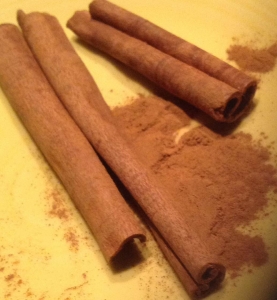My baby girl turned 24 this week. My mind drifted back to the hours leading up to her birth.
“On a scale of one to ten, what is your pain?” the OB-GYN nurse asked, as I entered another round of contractions.
“About an eight,” I grunted, dreading what a ten was going to feel like.
“OK, let’s turn you over on your side so that your labor can be more productive,” the nurse said.
More productive turned out to be more agonizing as the pain soon hit a ten. They didn’t tell us in Lamaze class that you will likely feel like your body is going to snap in half. I suppose there’s no way to really explain that type of body contortion. Only women who have given birth know how it feels.
That’s how it is with pain. You just have to feel it to understand it.
My nurse used the one- to- ten scale so that she and I would have some basis of comparison. Compared to other pain I’ve felt in my life, how bad was my contraction? Would it have been the same number had she been feeling it? Probably not, but at least she knew how bad I thought it was. And, since she had once given birth, she had a fairly good idea of what I was feeling.
Trying to describe pain – like trying to describe a sound, an experience, a smell, a sight, or a taste – requires having a basis for comparison. The person to whom we’re describing it must have heard, experienced, smelled, seen, or tasted something similar in the past, or the description won’t work. If I tell you that something tastes “really sweet,” you have to have experienced a sweet taste to have any idea of what I’m describing. If I tell you that I stubbed my toe really hard or that I burned my finger on a stove burner, you probably can relate to the pain I’m feeling. You’ve experienced it before.
Have you ever tried to explain what a specific spice tastes like? Try to describe the taste of cinnamon. I can’t. It tastes like… cinnamon. I’m hard pressed to create an accurate enough description to really tell you how it tastes. Unless you’ve tasted it, you have no idea what it means if someone says, “It tastes like cinnamon.”
So it is with most life experiences. Unless you’ve sat on a frigid metal bleacher at Lambeau Field and watched a Packers game, you can’t accurately grasp the sights, sounds, smells, and tastes that are involved. Unless you’ve gone through a divorce, you can only imagine the trauma. You get the picture….
These common experiences of smells, sounds, sights, tastes, and physical pain and pleasure help us to form affinities with other people who’ve experienced the same things. It’s one of the first ways we bond with people.
I weave this concept of affinity building into all of my work and relationships – always looking for common ground. Heading into each new experience with the idea that it will help me relate to people who’ve had that same experience is invigorating. I toted a shotgun around the woods with my husband during grouse hunting season just to gain an understanding of why he was passionate about the sport. I get it now. I’ll never be a good shot, and I may never hunt again, but I built affinity and understanding with him in a new and deeper way.
This week, do something you’ve never done before. It doesn’t need to be childbirth or grouse hunting. Try a new spice, listen to a different musical artist, or read a magazine you didn’t think was relevant to you. You’ll find that, when you least expect it, that new experience will help you build affinity with a group of people you’ve never had anything in common with before. Sharing common experiences is the most basic – and easiest – form of affinity building.
P.S. The few hours of 10-scale pain during childbirth was SO WORTH IT!
Building Affinity,
Betsy



Wow! here I always thought it was a snap . I dont think I will try it. Great article. I will take you up on your suggestion
Thanks, putt1935! I’d love to hear what new experience you tried this week. -Betsy